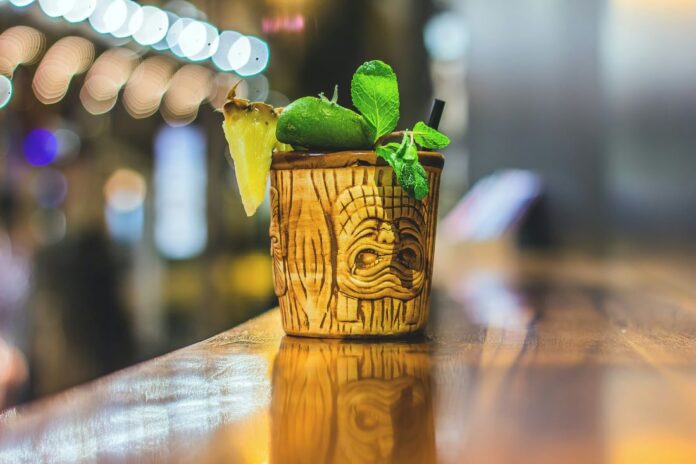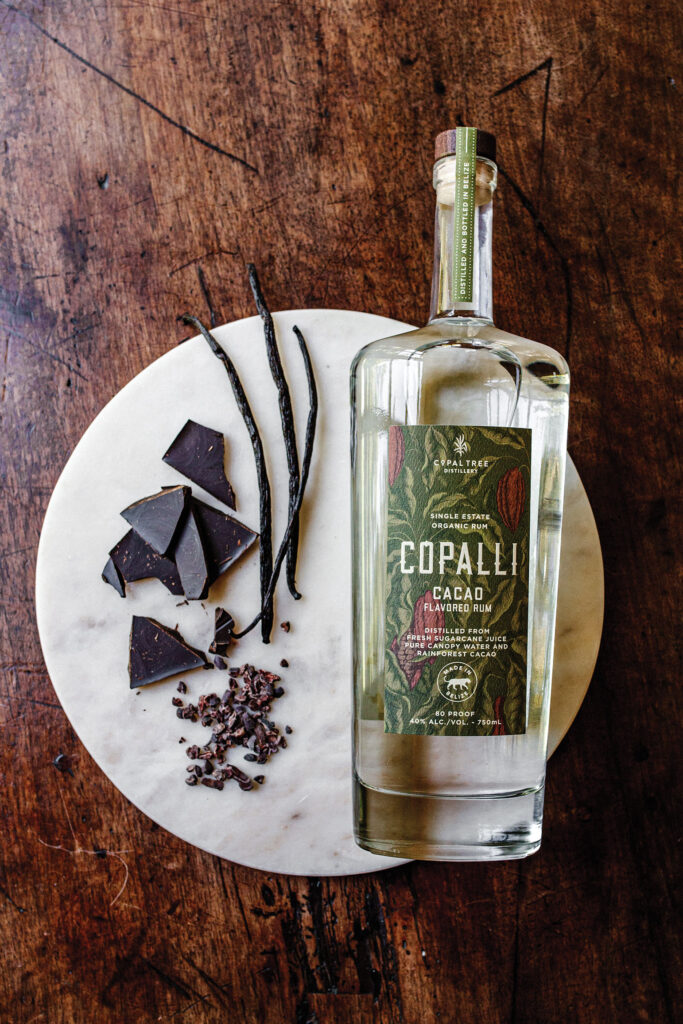Is there a better deal in premium spirits right now than rum? Bourbon’s popularity has led to price spikes across that category, while tequila’s recent rise has had a similar effect on the cost of agave spirits. Meanwhile, a well-aged rum is unlikely to cause sticker shock.
Which is good news for the category. Today’s customers want premium products at a value price. What began years ago as an increased interest in sophisticated wines, craft beer and American whiskey has now blossomed into a common consumer sentiment towards most alcohol categories.
“For the most part, today we’re talking about a premium aged spirits consumer,” says John Meisler, vice president of sales for Serralles USA, which includes Don Q. “Wine and craft beer encouraged people to play inside a category. Consumers don’t just drink one thing anymore, they drink everything.”
That has encouraged trial across categories, Meisler adds. “If someone is drinking Woodford Reserve, Rémy Martin, Blaton’s or The Macallan, then they’re going to try other premium spirits. Consumers today are premiumization drinkers. It’s a change of mindset.”
This turn has caught the attention of most if not all rum producers.
“The rum category is continuing to trend towards premiumization, where consumers are increasingly valuing craft and aged rums over traditional options,” says Antoine Couvreur, managing director, Mount Gay Distilleries.
“Rum is experiencing heightened consumer awareness these days, with brown spirits enthusiasts recognizing that there is so much more depth to rum than the clichŽ frozen drink on vacation,” Couvreur adds. “Sipping represents today 18% of rum consumption, a drastic shift.”
Still, there’s no denying that this is a story well told by now.
“Rum has been on the cusp of being the next big thing and getting over the hump every one to two years, on average, for the last 15 years,” says Mark McLaughlin, cofounder of Old Line Spirits, a Baltimore distillery whose portfolio includes a line of imported Caribbean rums. “But premiumization is a real thing. Rums have high quality, and more people are realizing that just like bourbon and single malt, these rums can be just as amazing, every bit as complex and delicious, as any aged spirit.”

Aged and Finished Rums
These consumer realizations and preferences for premiumization have resulted in a wave of innovation in rum, especially in barrel aging.
“It’s noteworthy that while the rum category was traditionally dominated by white, gold and flavored variants, the market share is now increasingly occupied by aged products,” says Ricardo March, founder of Bacan Guaro, an aguardiente made from sugarcane.
“Distilleries are increasingly exploring different barrel types and finishes, with cherry and port barrels leading the way in innovation,” he adds. “Unlike the past, where most rum producers relied on second-hand bourbon barrels, there’s now a significant shift towards using French barriques that previously held wines like Sauternes, port or cherry casks, resulting in remarkable flavor profiles.”
A pioneer in the aging and finishing space is Don Q.
“Don Q Gran Añejo came out in ‘95,” points out Meisler. “We didn’t see many super-premium aged rums back then. We were an early adapter in finishing as well, with double casks and double woods. Then in 2015, we released a single barrel rum.”
For whiskey drinkers who love single barrel bourbons and special finishes, all these aspects translate naturally into rum.
“You see the DJ up in their booth turning their dials up and down; well, for bourbon drinkers, all the dials are the same in rum,” says McLaughlin, at Old Line Spirits. “Vanillas, spice, age — they’re largely the same in rum, just delivered in different levels. In general, rum is delivering to consumers a lot of the same things as bourbon, just in a different manner.”
The results speak for themselves.
“Appleton Estate saw a 13% trend increase ahead of total rum (up 0.1%) in 2023 (Nielsen 2024), which was led largely by the brand’s aged rum: 8 Year Old, 12 Year Old and 21 Year Old,” says Melanie Batchelor, managing director, Campari America. “Like many categories, rum has seen standard and value spirits decline while the super-premium segment gains momentum. As consumers look to trade up, brands with strong aged portfolios and a healthy stock of aged rums, like Appleton Estate, are positioned well for growth.”
“Appleton Estate has seen an appetite for limited, high-end offerings,” she adds. “Appleton Estate 17 Year Old Legend — an exclusive and faithful recreation of the legendary 17 Year Old rum that was crafted by J. Wray & Nephew on the Estate in the 1940s and is known worldwide as the storied inspiration for the creation of the original Mai Tai cocktail — was released in June 2023 and sold out in minutes through the brand’s digital channels. In 2023, Appleton Estate also debuted two new vintages within its coveted Hearts Collection: 1993 and 2002.”
Craft Cocktails
Among the lasting developments brought by the Covid-19 lockdowns is everybody’s home bar becoming so well stocked. More people now know how to make the kinds of cocktails that they had enjoyed at bars and restaurants before the pandemic closures.
Rum has benefited.
“Rum has a high rating in the off-premise,” says Marc Farrell, founder of Ten To One Rum. “The shift to the at-home cocktail concept, I think that will continue to work in rum’s favor.”
“Rum is a very versatile spirit,” he adds. “As more consumers learn how to unlock that versatility, they will see the full range of cocktails that rum can make.”
Echoing Farrell is Couvreur of Mount Gay.
“We can expect to see more and more infusion of rum in cocktails where it traditionally has not been,” says Couvreur.
“Soon, rum will no longer just be associated with sugary vacation drinks, but also as a well-made spirit that brings unique flavor profiles to a variety of consumption occasions, from sipping to cocktails or simply adding elegant mixers.”
Quality, Transparency, Sustainability
Consumers today, especially younger generations, care greatly about what goes into what they eat and drink. A healthier lifestyle transcends everything these people consume, with the idea that this also means higher quality.
“Bartenders and consumers have increasingly come to understand that quality ingredients and skilled production methods truly matter when crafting better spirits,” says Scott Shaw, chief commercial officer at Copalli Rum. “Our rums are produced from fresh-pressed sugar cane juice, from organic heirloom sugar cane that we sustainably grow and harvest in our own fields in Southern Belize.”
“We don’t use molasses and we don’t add sugar, as so many other rums do,” he adds. “And when you have high-quality, flavorful rum like ours, it simply makes for better tasting cocktails.”
Agreeing with him is Meisler, of Serralles USA.
“You hear people say they don’t like rum because rum is too sweet,” he says. “Well, rum is not sweet. The sugar that people put into rum, that’s what’s sweet. It’s the only way to make rum sweet. We don’t add sugar to Don Q. We let the barrel do the talking.”
As consumers continue researching everything, and categories like tequila start adding “additive free” to their bottles, rum will likely have to follow suit.
“I’m a major advocate of transparent and all-natural in rums,” says Farrell of Ten To One. “Leaning into super-clean liquid and transparency has been a tenet for us from day one. Ten To One has no additives in it. Which is a point of tension in the industry, because consumers have come to expect the opposite. For so long, many brands have added sugar or coloring.”
“Consumers today are trending towards a different perspective now,” he adds. “They have a desire for clean products and for transparency. And transparency means two different things. It means what’s in the bottle and the question of provenance. It’s important to invest equally in both. Where the consumer is going these days, I don’t think rum has much of a choice.”
The same customers who care deeply about quality and transparency also typically reward brands that support sustainability. It’s all part of a similar, rising, hyper-educated, socially conscious consumer demographic.
Accordingly, at Mount Gay, the brand has “developed the most sustainable packaging in the high-end rum offering,” says Couvreur, “with a light bottle made with 70%-plus recycled glass, a mono-material cork and gift box, low level of ink on labels, and yet all the relevant information available at consumers’ fingertips thanks to a QR code on the pack.”
He, too, believes in the growing importance of provenance in rum.
“We can also mention a trend that appeared in the past few years in other categories, from single malt Scotch whiskies to tequila or Cognac: terroir, provenance, soil, etc.,” Couvreur says. “The launch of [Mount Gay] Single Estate Series in 2023 was, even if not planned as such, at the start of this trend in the rum category.”
It’s a trend recognized across the industry.
“More than ever, we’re seeing that consumers are interested in learning about and drinking spirits that have a unique provenance, deep history or cultural significance,” says Batchelor of Campari America. “Rum, particularly when looking at legacy distillers like Appleton Estate, offers all three — and that ability to satisfy consumer curiosity, coupled with the ongoing energy around-super premium spirits across the industry, has contributed to rum’s growth.”
The movement in rum towards better, local, all-natural ingredients — along with premiumization — also plays into the category’s fast-growing flavored segment.
“Innovation is very important in this category, especially in terms of flavors,” Shaw says. “That’s why we developed our Copalli Cacao Rum, infused with roasted organic cacao nibs that we grow on our distillery and lodge property in Belize. As a matter of fact, we grow so many interesting local fruits and crops at our farm that we’re continually experimenting with how to use those ingredients in future releases of our rum.”
The Future for Rum
What’s next for the category? As always, forecasting the future is difficult if not impossible.
“Maybe rum stays in the realm as it is now, and we do as much volume as Cognac or Armagnac,” says McLaughlin, of Old Line Spirits. “But a lot of people in bourbon are getting priced out. They’re thinking, ‘Where can I still get the quality and the value?’ Rum delivers that.”
The rum nerds do exist, he adds. “But when you’re dealing as much as we are with all the whiskey clubs [Old Line primarily produces American single malt], at the end of the day, you realize these people are about all high-quality spirits. These guys have dug deep into the categories they’re familiar with, tequila and whiskey, and now they’re looking elsewhere. There’s momentum starting to build.”
With that in mind, and the high prices of bourbon and tequila compared with rum, McLaughlin wonders whether there’s a parallel between rum today and whiskey a decade or so ago. A time that we all recall, perhaps wistfully, when bottles of Pappy and Buffalo Trace Antique Collection sat on shelves at reasonable prices, not yet affected by hype. How easy and comically affordable it would have been then to load up on BTAC and other modern-day unicorns.
Will we one day think similarly about all the premium rums that are priced reasonably right now?
“Ten years from now,” McLaughlin says, “people may be looking back and kicking themselves for not getting these rums when they were so affordable.”
Feature photo by Wine Dharma on Unsplash.
Kyle Swartz is editor of Beverage Dynamics. Reach him at kswartz@epgmediallc.com. Read his recent piece, What’s the Future of the Whisky Industry?












